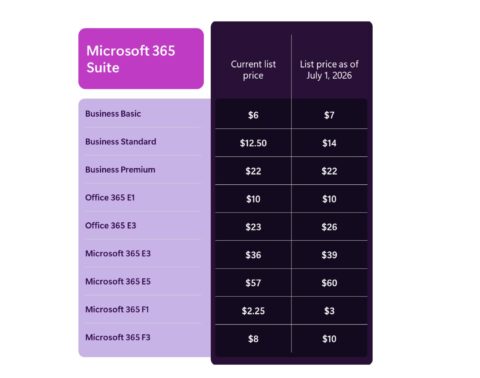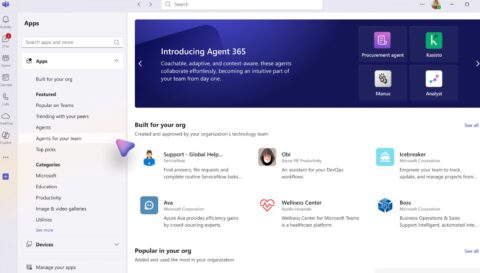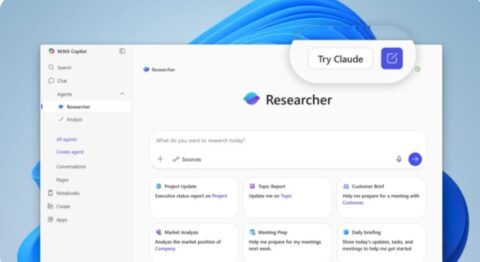Updated: April 8, 2024 (February 20, 2024)
BlogCIO Talk: Don’t Forget the IT Fundamentals!

A while back, as an experiment, I took an extract of all the Directions on Microsoft content, indexed it using a separate instance of Azure AI Search, and then fed it to the Azure OpenAI service. The initial results proved promising, even exciting: I could ask it simple questions like “What is Microsoft Priva?” and more complex licensing questions like, “Explain the differences in E3 and E5 license tiers for eDiscovery” and I’d get concise, accurate answers.
Then I began to ask myself, “Is this the future of IT?” After all, a big part of any organization’s IT mission is to be able to answer questions: about business performance, about customer desires, about likely future outcomes, and so on.
More precisely, is the future of IT to take all the data in all the disparate IT systems, smoosh it all together so that a large language model (LLM) can crunch it, digest it, and then spit out answers in well-constructed sentences?
Well, maybe. But I don’t think so.
Back to the future (of IT)
As important as LLMs are (and it goes without saying they are transformational), we cannot and should not forget the fundamentals of IT — principles and practices established over decades.
Let’s remember:
Trustworthy data underpins everything you do. Many years ago (decades, now that I think about it) I led a project in Microsoft IT to create a single customer master database, that is, the authoritative source for Microsoft enterprise customer information: company name, address, billing and technical contacts, etc. With many different lines of business (Office, Windows, gaming, and so on) it was important all the various line-of-business (LOB) transactional systems used absolutely and verifiably correct information when communicating with customers.
Since companies relocate, get absorbed in M&A, change names, and so on, we had to ensure that the data was carefully structured, curated, and safeguarded, through both technical and governance processes. (Much easier said than done, incidentally.)
The point: This core, authoritative data underpinned businesses across Microsoft.
Data models, ultimately, define your business. Every organization — company, department, governmental agency — has an information architecture (whether they know it or not, and many don’t, somewhat horrifyingly). The building blocks for the information architecture are data models. How, precisely, do you define “customer?” Or “product?” Within these models — whether they are explicitly defined via Entity Relationship Diagrams (ERDs) or are in people’s heads (for the love of IT, document them formally!) — are the details and the semantics that define what makes a customer valuable to you, and what makes your products valuable to them.
For example, many retailers track a Customer Lifetime Value, that is, the projected worth of a customer over time and correlate buying habits and history to try to maximize their value. In essence, that’s the company’s business model. But it’s not the only one: other retailers base revenues on annual subscriptions, which drives different sorts of business behaviors.
Data models ultimately reflect a business’ competitive differentiation. The more precisely defined the data model, the more finely tuned the business strategy.
Care and feeding of mission-critical relational databases is as important as ever. I doubt any right-thinking CFO would want to base a 10-K on anything but a database with rigorously enforced relational integrity constraints, that has high availability, robust backup with well-defined recovery time objective (RTO) and recovery point objective (RPO) parameters — along with a periodically tested restore function and disaster recovery capabilities.
It’s here where the effort put into data models yields enormous value. Microsoft 365 Copilot could generate some of the boilerplate text in a 10-K, and otherwise enrich it with data from other sources, but the core data must be rock-solid, accurate, and defensibly so. No CFO wants a restatement that can have both reputational and possibly legal consequences.
Your data estate is a living ecosystem. All this does not diminish the need for or value of different data management architectures such as NoSQL databases: it’s not efficient or cost-effective to maintain, say, clickstream data or IoT telemetry in Azure SQL when Cosmos DB might be a more scalable and cheaper option. These sorts of data, when joined with data from relational systems to connect clickstream history with purchases to predict future buying habits, or to predict when an IoT device needs replacing, are hugely valuable. Fabric and Power BI give us the opportunity to query immense amounts of data of different types to give insights on-demand visualizations which can speed decision making and predict the future.
Scaffolding matters
But to get the most value from your data, remember that all these new capabilities don’t replace the systems upon which we’ve built our businesses. Rather, AI, data lakes and lakehouses, and visualizations depend upon, and scaffold upon, the trustworthy data and systems that represent the core of IT.
Disagree? Will Large Language Models utterly sweep away the old and usher in an entirely new era of IT? Drop me a line at bbriggs@directionsonmicrosoft.com and tell me what you think.
Related Resources
Directions on Microsoft podcast: A deep dive into all things data
Use Your Own Data with Azure OpenAI (Directions members only)















